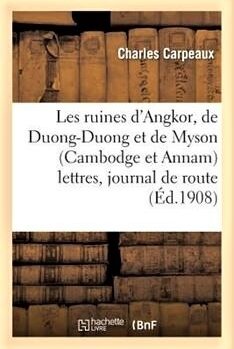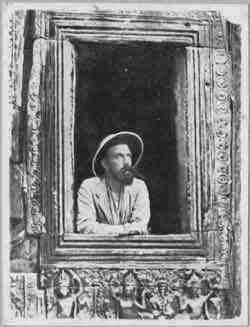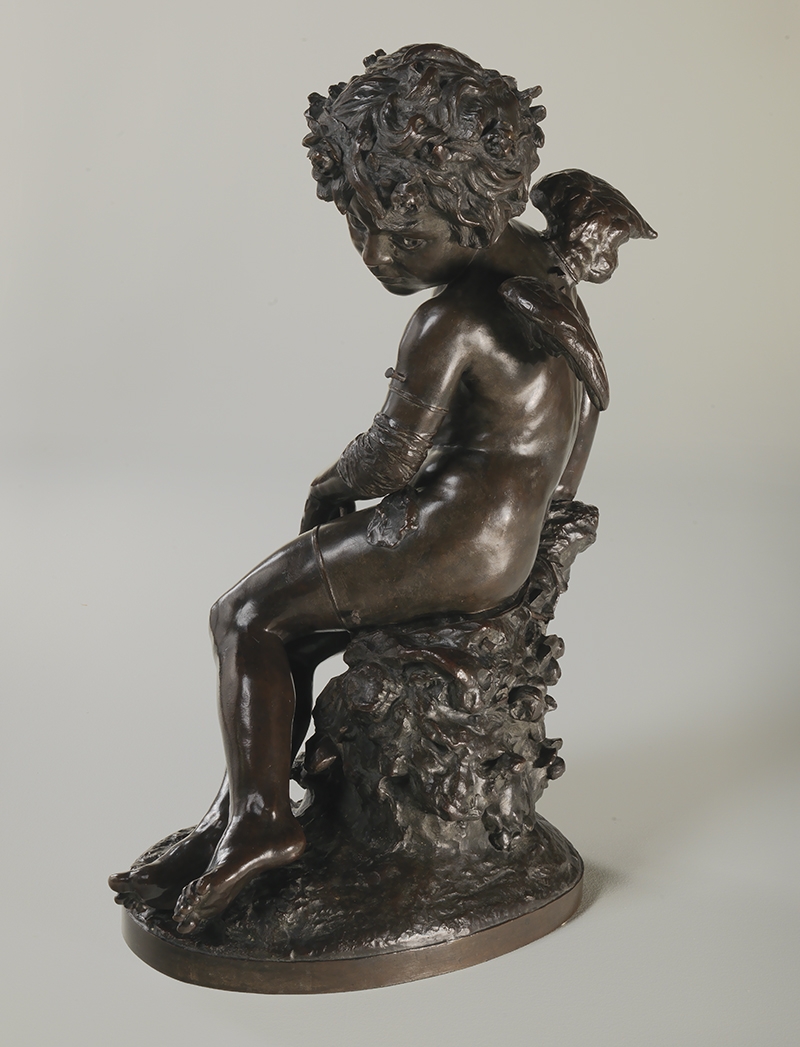Les ruines d'Angkor, de Dong Duong et de Myson (Angkor, Dong Duong and My Son Ruins)
by Charles Carpeaux
The travelogue of an early explorer and archaelogist in Angkor and Champa areas

Type: paperback
Publisher: Mme J.B. Carpeaux, mother of the author, in Paris
Edition: Facsimile by Hachette Livres/ BNF, 2013
Published: 1908
Author: Charles Carpeaux
Pages: 284
ISBN: 978-2013262262
Language : French
Photographer and archaeologist Charles Carpeaux traveled extensively in Indochina and Cochinchina at the turn of the 20th century. His travelogue, completed with letters to his mother (who edited this edition after the author's death in 1904), is an important contribution to the history of Angkorian and Champa site exploration, and a precious testimony on the daily life in Indochina then.
About Dong Duong archaelogical site, in Quang Nam, modern Vietnam:
The most important site (with My Son) in north and central Vietnam for our knowlege of the Cham civilization and art, Dong Duong is a ruined Buddhist monastery complex of the late 9th century. According to Encyclopaedia Britannica, "the architectural detail is distinguished from the My Son work by its greater emphasis upon the plasticity of architectural elements such as angle pilasters and porticoes. The circuit wall was about one kilometre long and once contained many shrines dedicated to Buddhist deities. It is possible that, when this complex of brick courts, halls, and gate pavilions was intact, it may have resembled very closely the contemporary Buddhist monasteries of northeastern India."

Charles Carpeaux at Dong Duong site, 1902 (EFEO Collection, WP640 Republication)
Tags: Cham civilization, Champa, Western explorers, Vietnam, archaeology, photography
About the Author

Charles Carpeaux
The son of famous French sculptor and painter Jean-Baptiste Carpeaux, Charles Carpeaux (25 Apr. 1875, Paris - 28 June 1904, Saigon) went to Angkor for two exploratory missions in 1900 and 1903, before passing away from dysentry and exhaustion.
An artist himself, he entered the Musée du Trocadéro in Paris at a young age, pursuing comparative studies in sculpture and painting, and starting a vast study on his father's body of work. He also assisted Louis Delaporte at the Musée in cataloguing Khmer sculptures and bas-relief mouldings.
Sent to Indochina to take part to the preliminary inspections of Khmer temples by EFEO, he rapidly became Head of Technical Services of the Ecole Francaise d'Extreme-Orient, while operating as a photographer on digging and restoration sites, in particular for monuments dating back from the Kingdom of Champa.
In addition to his archaelogical and artistic work, he left an instructive Diary-Travelogue, first published in 1908, Les ruines d'Angkor, de Dong-Duong et de Myson.

Charles Carpeaux in Angkor (Photo Musée du Petit Palais, Paris)
Note: In his tender age, Charles often posed -- with and without his mother, Amélie Victorine Marie Clotilde de MONTFORT (1847-1908) -- for his father, the acclaimed sculptor and Prix de Rome (1854) Jean-Baptiste Carpeaux. He is the subject of the "Wounded Cupid" sculpture, kept at the Lisbon Gulbenkian Museum (read more here):
 Charles Carpeaux as Wounded Cupid, by Jean-Baptise Carpeaux (Museu Calouste Gulbenkian, Lisbon)
Charles Carpeaux as Wounded Cupid, by Jean-Baptise Carpeaux (Museu Calouste Gulbenkian, Lisbon)
